Slow juicer purchasing advice: how to choose the right product
- The most important facts in brief
- Slow juicers process vegetables and fruit into juice particularly gently, so that important nutrients and vitamins are preserved.
- The gentle juicing process promises a natural and differentiated taste experience.
- Unlike conventional juicers, a slow juicer can also handle grasses, herbs and leafy vegetables.
- A cold juicer not only works with a lower number of revolutions, but also produces less noise than a centrifugal juicer.
- In addition to the inexpensive vertical juicers, there are also horizontal juicers with a double roller and compact slow juicers with only one roller.
Healthy, healthier, slow juicer
A healthy and balanced diet is important to most people. Homemade fruit and vegetable juices are delicious, relatively quick to prepare and provide the body with the necessary nutrients. A slow juicer is a practical help so that you don’t have to do without it in everyday life. It converts vegetables, fruits and grasses into easily digestible juices. You can then drink these conveniently at home, at work or on the go.
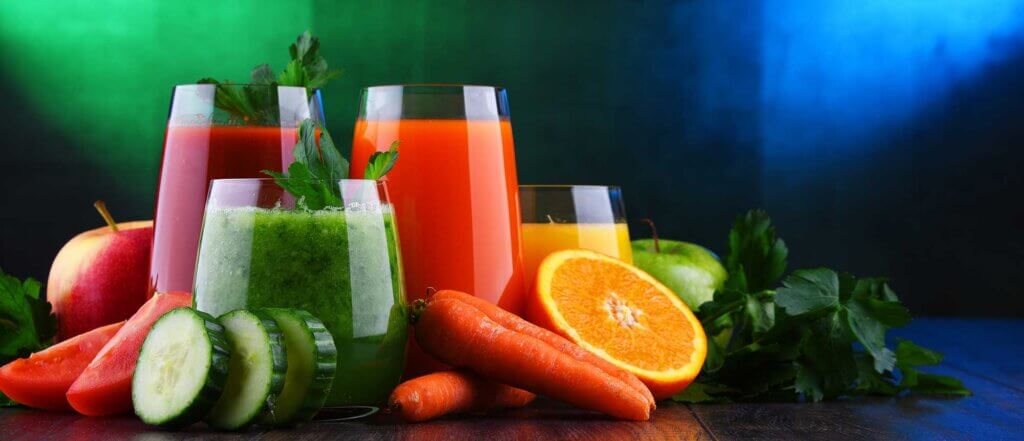
Experts recommend eating two to three portions or units of fruit and vegetables daily. However, for many – especially working people – this is hardly feasible. In everyday life, there is often not enough time to prepare and eat the recommended foods. A slow juicer is a welcome remedy, because with its support, delicious drinks can be made in no time at all, combining several healthy ingredients.
The retail trade offers a huge range of different vegetable and fruit juices as liquid fitness aids or even snacks. But firstly, these juices offered as fitness drinks come at a price and secondly, they are not freshly prepared. In addition, caution is advised with the large selection. After all, it is not always obvious where the processed fruits come from and whether they are biologically valuable products.
Many juices also contain flavourings, preservatives and sugar. If you press your own fruit and vegetable juice with the help of a slow juicer, you can be sure about the origin and quality of the food used and know exactly what the juice is made of. In addition, a slow juicer guarantees that the valuable minerals, enzymes and vitamins of the ingredients are preserved.
What is special about a slow juicer?
Often referred to as a cold juicer or cold juicer, a slow juicer processes not only fruits and vegetables, but also grasses and nutritious leafy vegetables. Be it apple, spinach, wheat, spelt – there are actually no restrictions on the choice of ingredients. Depending on the type, however, the food must be peeled, chopped and possibly seeded before it goes into the juicer.
The name may be a little misleading, because extracting juice with the slow juicer does not take much longer than with a conventional juicer. It just spins slower, thus generating less heat and ensuring that the vitamins and nutrients of the processed ingredients are preserved. Because a slow juicer works at high pressure, the amount of juice obtained is thinner and often higher than with other juicers. A pleasant side effect is that the gentle juicer produces less noise than its faster counterparts.
Centrifugal juicer versus slow juicer
Juicers can be divided into two categories: Slow-Juicers and Centrifugal Juicers. But which variant achieves the best taste experience and at the same time guarantees the preservation of valuable nutrients and vitamins?
Centrifugal juicers: Faster, but more damaging to vitamins and nutrients
Conventional centrifugal juicers work at enormous speed and with many revolutions. The fruit fed into the juicer is crushed by rotating blades or metal discs. With a power of up to 1,500 watts, the devices generate around 15,000 revolutions per minute. This high frictional energy inevitably heats up the ingredients, which damages the vitamins and micronutrients, some of which are sensitive to heat. In addition, the fruit ingredients come into contact with a lot of oxygen during the crushing process, which also deprives them of valuable vitamins and reduces the taste quality.
Centrifugal juicers have quite large openings so that coarse pieces or even whole fruits can be fed directly into them. This way, you quickly get the desired juice, but the result is ambivalent: due to the high centrifugal force, not only do flavour and vital substances get lost, but the rather coarse processing also leaves larger pieces of fruit in the juice, which many people find annoying.
Slow juicers: “Slow” to success
Slow juicers, on the other hand, work with more feeling. In this context, the attribute “slow” means deliberate or retarding rather than slow. After all, the speed of slow juicers is much lower than that of conventional centrifugal juicers. With a power of around 250 watts and less than 100 revolutions per minute, the food is chopped and spun very gently.
This way, hardly any oxygen gets into the juice and the oxidation process is slower, which preserves the nutrients. Thanks to the reduced rotations, there is also less heat, which preserves important enzymes and plant substances. Cold juicers take a little longer to juice, but the juice is thin and nutrient-rich.
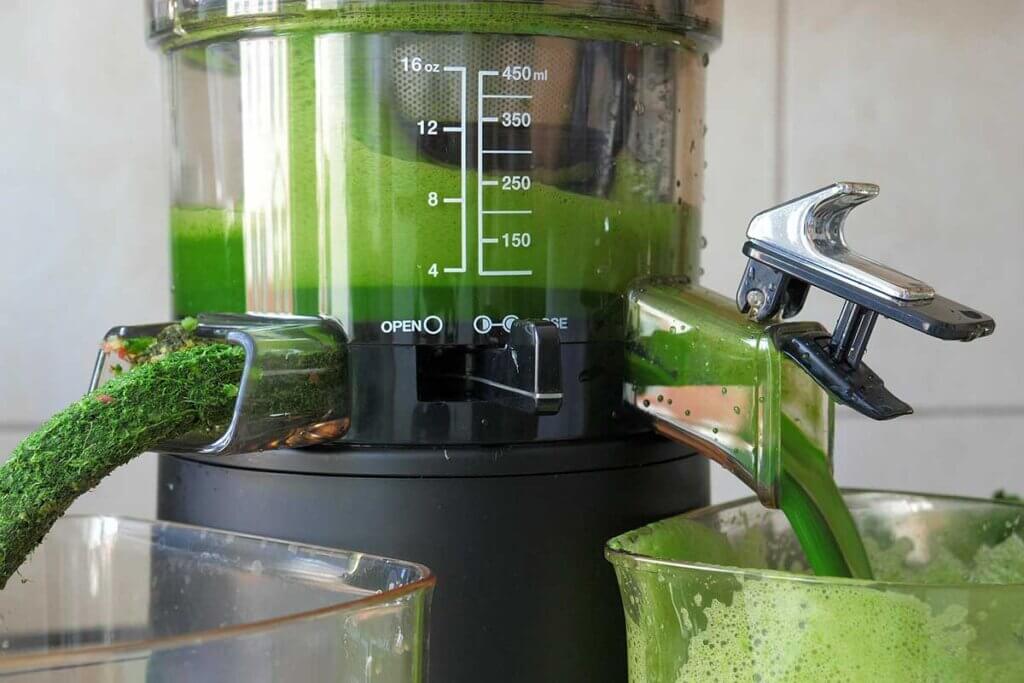
Instead of using blind force, slow juicers work with gentle but amazing pressure. The added vegetables, fruits and grasses are pressed together so efficiently that all the valuable ingredients are extracted from them. The process is not only gentler, but also ensures that the juice has an incomparable natural taste. In addition, the high pressure ensures that the juice extraction is more productive than with many conventional juicers.
Another great advantage of slow juicers is that their use is not limited to classic fruits and vegetables. Apart from preparing orange, tomato and celery juices, they are also suitable for processing grasses and leafy vegetables of all kinds. Whether wheat grass, oats or spelt, herbs, spinach or lettuce – cold juicers turn every plant and fruit into a tasty, healthy juice. The fact that they are slightly more expensive on average than centrifugal juicers is outweighed by their numerous advantages.
Advantages
- Particularly gentle processing of the fruit
- High taste quality
- Preservation of nutrients and vitamins
- Processing of grasses, herbs and leafy greens
- High juice yield
- Low noise pollution
Disadvantages
- High purchase costs
- Crushing, coring and peeling of fruit necessary
- Slow juicing process
Slow juicer types: The roller makes the difference
The advantages of “slow” juicing are unmistakable. But not all slow juicers are the same. There are various types on the market that differ in terms of design, function and performance.
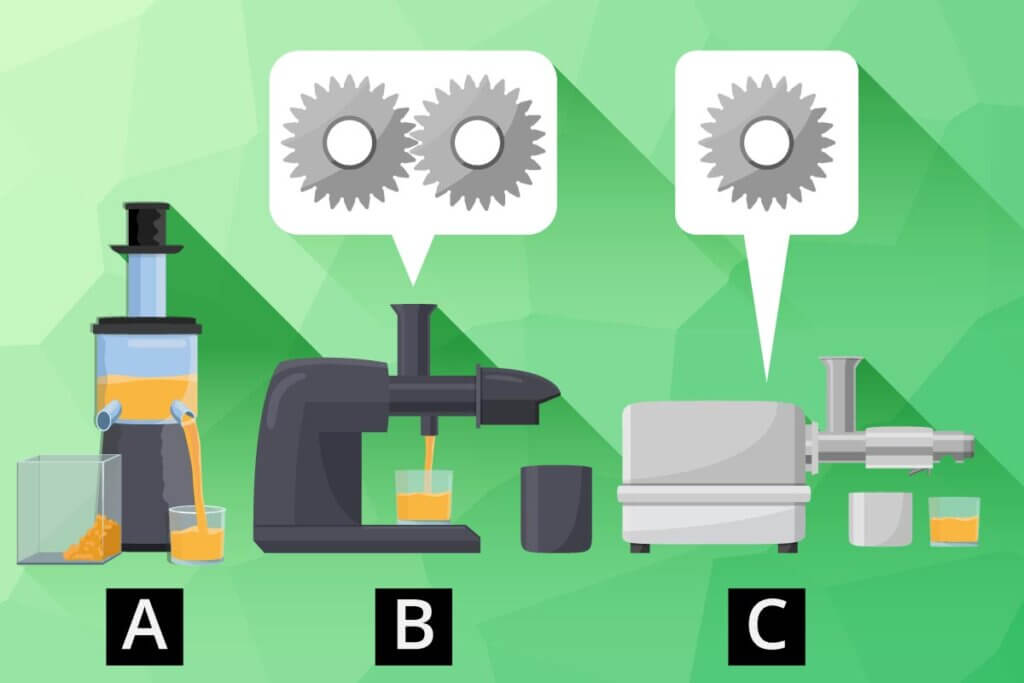
When choosing the right model, the type of juices to be prepared with it is the most important factor. In terms of construction, a distinction is made between vertical and horizontal juicers. The latter can in turn be divided into two sub-types, namely models with one roller and those with a double roller. Although most devices can handle a variety of different ingredients, each type has its strengths and weaknesses when it comes to chopping certain types of vegetables and fruits. There is also a lot to consider when it comes to space requirements and cleaning.
Roughly speaking, lovers of sweet fruit juices are well advised to use a vertical juicer. Those who prefer green juices from grasses and herbs should invest in a horizontal juicer with a double roller. Juicers with only one roller are versatile, but rarely achieve the juice quality of double-roller models.
Vertical juicer – the slim all-rounder
If you are new to the world of slow juicers and are looking for a simple and inexpensive option, a vertical juicer is a good choice. Because it is taller than it is wide, it takes up less space than a horizontal juicer. However, with most models, this advantage only becomes apparent when the slow juicer is not in use. The pomace and juice containers often have to be placed outside when juicing.
In the vertical juicer, the press roller and feed hopper are arranged vertically. Due to the effect of gravity, the fruit is pulled into the roller as if by itself, so there is usually no need to use a pusher. In addition, the funnel is relatively large. This means that several ingredients can be filled in at once and delicious juice can be obtained quickly.
Another advantage of this type of machine is the high juice yield. This is especially true for chopping soft fruits such as ripe apples, pineapples or avocados. Such a model is also ideal for vegetables such as tomatoes. However, the juice produced is usually quite thick and rich, which is definitely a matter of taste. In addition, many vertical juicers are weak when it comes to squeezing grasses, herbs and leafy vegetables. If mainly green juices are on the menu, a horizontal juicer with a double roller is the better choice.
Advantages
- Cost-effective
- Space-saving
- Easy to fill
- Quick juice preparation
- Effortless cleaning
Disadvantages
- Loss of vitamins
- Wider during operation due to additional containers
- Unsuitable for grasses, herbs and leafy vegetables
- Consistency of juice needs getting used to
Horizontal juicer with twin roller – best choice for gourmets
A horizontal juicer with a twin roller promises a distinctly nuanced taste experience. With this design, the ingredients are gently and efficiently pressed between two pressing screws or rollers. The natural aroma and vital substances are particularly well preserved in this process. This also applies to ingredients that are more difficult to juice, such as grasses, salads and wild herbs.
The double roller not only ensures a very good yield, but the juice also has a fine consistency. Processing ripe fruit, on the other hand, is more problematic. They can only pass through the twin roller slowly and often cause a jam in the feed hopper. In contrast to the vertical juicer, the ingredients have to be pushed through with a pusher, so a little more patience is required here. It should also be borne in mind that such a device is somewhat more difficult to clean due to its more complicated construction and takes up more space on the work surface.
Nevertheless, a slow juicer with a double roller is the perfect choice for true gourmets who don’t want to compromise on taste and want to eat a diet rich in nutrients. However, this comes at a price. A model with a double roller is often significantly more expensive than a version that only has one pressing screw.
Advantages
- Gentle processing of aroma and vital substances
- Good juice yield
- Fine consistency without large pieces
Disadvantages
- Poor processing of ripe fruit
- Time-consuming cleaning
- High space requirement
- Expensive to buy
- Food must be pressed through with a pestle
Horizontal juicer with one roller – the compact alternative
The slimmed-down version of a juicer with a twin roller is a slow juicer that only has one pressing screw or auger. It impresses with its lower price, its space-saving design and its good cleaning properties.
A horizontal juicer with a roller is usually easy to operate and can be used for a variety of fruit and vegetable juices. However, in terms of yield and taste, it cannot quite compete with a double-roller juicer. The juice obtained from the single-roller model is often not as fine and differentiated, and more plant components end up in the pomace container. This is particularly evident when pressing leafy greens and herbs, as double rollers have a clear advantage here.
Advantages
- Inexpensive to buy
- Space-saving
- Easy to clean
Disadvantages
- Lower yield
- Behind double roller models in terms of taste
- More plant components left
Equipment for every need
The selection of slow juicers is large: the assortment ranges from low-priced models with solid performance to high-end products that not only conjure up delicious juices, but also look good as design objects. The market offers suitable models for almost every taste and need, so that nothing stands in the way of a healthy breakfast drink.
What speed is recommended for slow juicers?
With classic centrifugal juicers, special attention is paid to a high wattage or rotation speed. This is not the case with slow juicers – on the contrary: they are characterised by their low speed. Depending on the model, this is around 40 to 100 revolutions per minute, whereas centrifugal juicers achieve several thousand revolutions in the same time. The exact number of revolutions of a slow juicer is therefore of secondary importance. What is more important is the gentle juicing technique that distinguishes it from conventional designs.
Size of the juice container
An important purchase criterion for many people is how much juice can be pressed with the slow juicer at one time. While some only want a small glass for breakfast, others want to stock up on healthy juices for themselves or the family for the whole day. So it’s worth taking a look at the juice containers, because they have different volumes: between 500 and 1,400 millilitres can be collected in them.
Dimensions and weight
The dimensions of slow juicers vary depending on the model. They are usually around 40 centimetres high, 20 to 30 centimetres wide and 15 to 20 centimetres deep. The feed openings also vary in size; the small ones measure around four centimetres, the large ones up to eight centimetres in diameter. The juicers weigh between three and six kilograms, but some weigh ten kilograms or more. Depending on their size and weight, they take up a little more space in the kitchen. If you use them infrequently, you may need a suitable storage space.
Cleaning effort
Especially with intensive use, the question of cleaning the juicer arises. The removable parts can often be put in the dishwasher.
Basically, the devices can be taken apart very easily and cleaned easily by rinsing the individual parts with a small brush or sponge under a jet of water. The material is usually made of plastic and stainless steel and is relatively insensitive. Some models are also decorative and convince with classic, simple or more colourful designs.
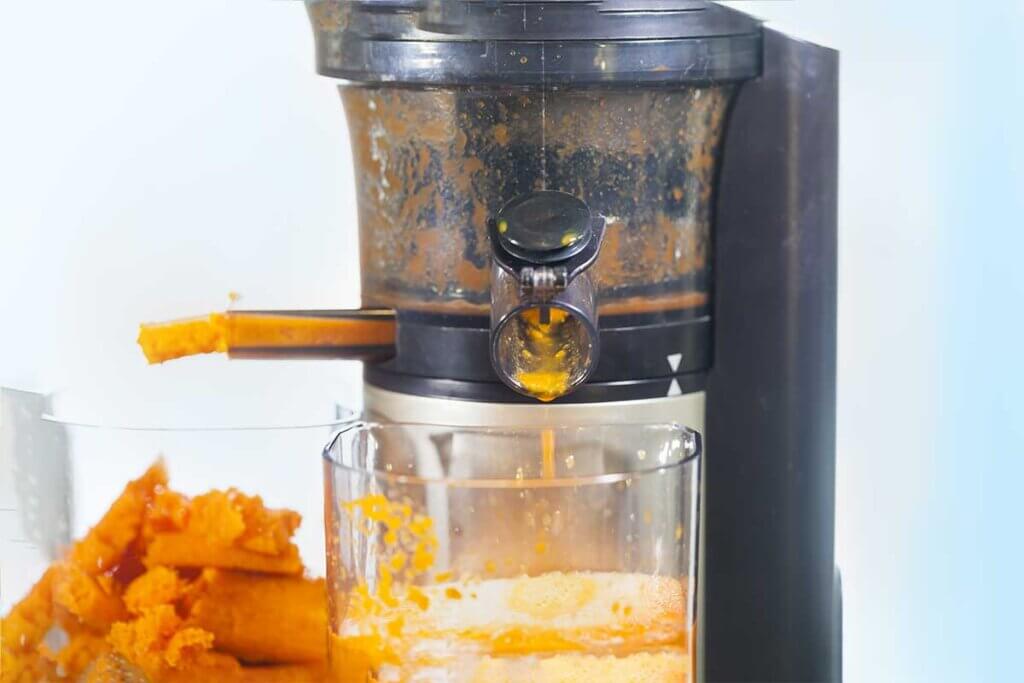
Acquisition costs
Ultimately, of course, the price is also a deciding factor in a purchase. Slow juicers are available in every price segment: the different models cost between 150 and 1,500 euros. A good juicer should cost around 400 euros.
What should go into the slow juicer?
There are actually no restrictions on the types of vegetables, fruits and grasses that can be juiced. However, it is important to prepare the food that goes into the juicer. After all, the slow juicer should not be damaged and the result should be satisfactory. Basically, it is advisable to carefully clean and wash the ingredients for the juice. Depending on the size of the feed opening, the food may need to be cut into pieces or chopped. For some fruits and vegetables, it is also essential to peel or seed them before putting them in the juicer.

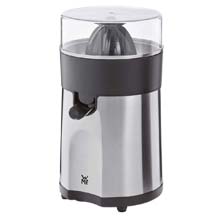
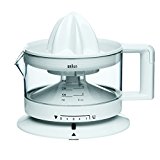
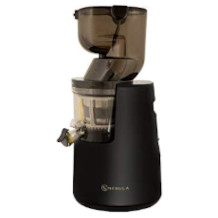
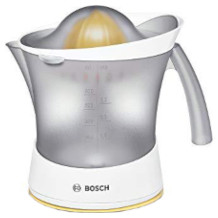
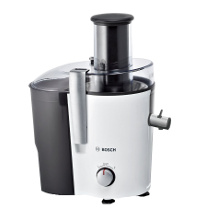
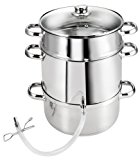





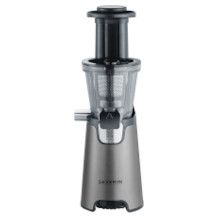

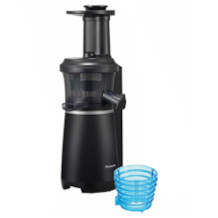

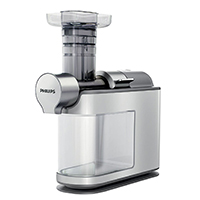
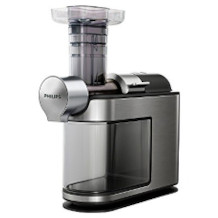

 629 reviews
629 reviews